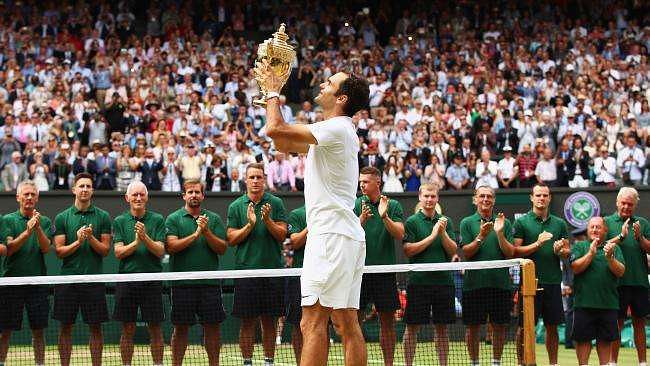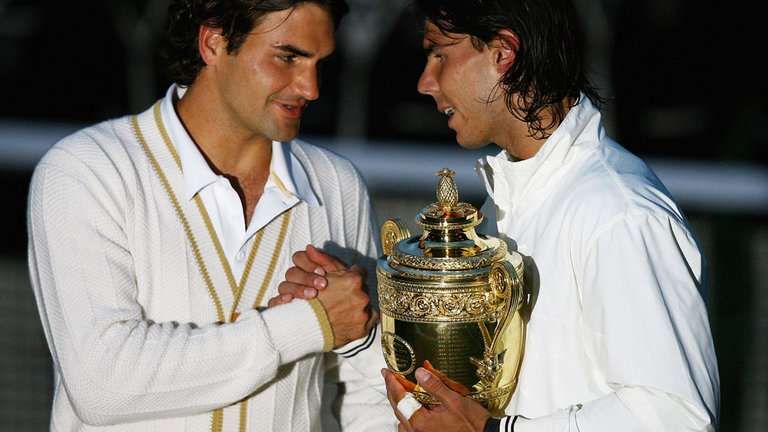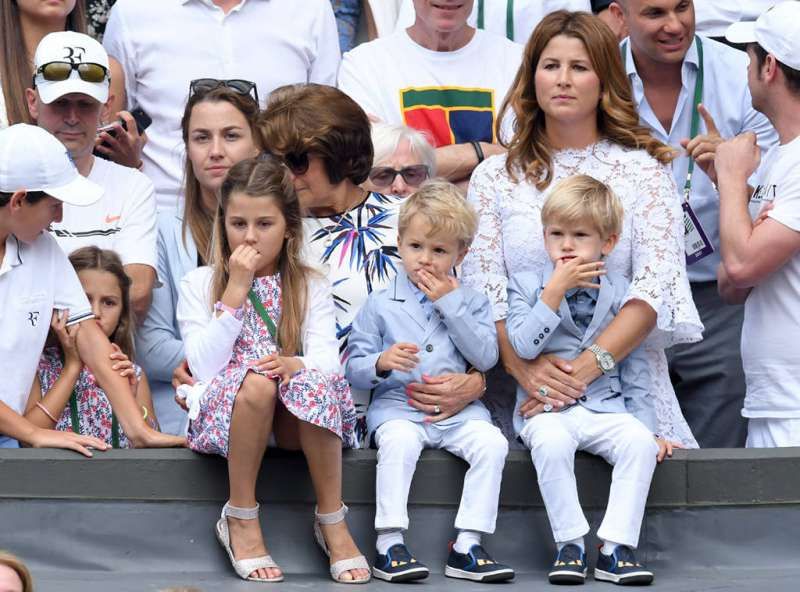
Roger Federer: The man who can make time stand still
Wimbledon and tradition go hand in hand. Very few sporting events have managed to juxtapose the imprints of modernity aside the remnants of history. This explains why Wimbledon retains its halo among the sporting cognoscenti, 146 years after its debut in 1877.
This also perhaps explains why Rolex came up with an ad saying “What makes Wimbledon great: Is it how a lawn became the sport’s definitive battle ground, or how the colour white stands for more than tradition?” The ad ends with these famous lines: “It does not just tell time, it tells history”.
The man in the background of the Rolex ad happened to be its most famous brand ambassador, signifying not just the grace of a champion, but also managing to hold time stand still: Roger Federer.
Federer has been creating history with every passing movement on a tennis court. Sportswriters have run out of adjectives to describe him. The late American novelist David Foster Wallace once described watching Federer’s game as a religious experience. Mr. Wallace was spot on, because in the mid noughties – when power hitters were dominating tennis – Federer was playing beautifully and winning just about everything.
The measure of greatness is sustainability, and Federer’s invincibility found its waterloo in Rafael Nadal. Nadal exposed his single-handed backhand and reduced it into such a weakness that Federer knew what strategy Nadal was going to apply each match, yet had virtually no answer to it for close to a decade. He failed to beat Nadal in a Slam for 10 years, starting from 2007.
When Nadal lost his form, Novak Djokovic became the single most dominant sportsperson in tennis, displaying the kind of domination that rivalled Federer’s. In fact, the ELO ratings still list Djokovic of 2015 as the strongest player in tennis history.
Tennis had changed its guard. In the process, Federer managed to stay relevant and retain faith in his game.
How much can a man re-invent his game? How much can a man believe? How assertively can a champion let go of his ego and appoint a coach who was his contemporary and rival a few years back? What does it take for a tennis player to change the size of his racquet head after playing with the same racquet for over 15 years? How much more can a man be willing to adapt? Is it just for winning?
Maybe yes. However, it is not possible to do all of this in your mid-30s when you have nothing more to achieve in the game, except for one thing: love for the sport. Tim Henman said after the Wimbledon final, “Tennis is Federer’s hobby, not his job.” Federer simply loves tennis, and tennis loved him back.
2017 has been kind of a surreal year for tennis fans. Nadal has won the French Open, and Federer is the Australian and Wimbledon champion. This last happened in 2007. Nadal played the best clay court season of his career and did not drop a set in Paris. Federer responded by not dropping a set in both Halle and Wimbledon, something he had never done in his prime.
If we carefully look at the results, it is simply an outcome of the process back-stage. Federer before his injury was the second best player behind Djokovic for close to two years. The Serb was the only man stopping him in the closing stages of every big tournament. With the injury break last year, Federer managed to get the time needed to regroup his body and more importantly, his mind.
He worked on the finer details. His fitness trainer Pierre Pagnini said before the start of the season, “Federer’s fitness level is akin to that of a 25-year-old.” His ability to reach balls that he was letting go in the last couple of years has created doubts in the opponents’ minds and led to more unforced errors from them. The backhand, which had become his weakness, has now become his strength, and he is willing to go over the backhand side more than ever, both down the line as well as cross-court.
His willingness to take the ball early proved to be the major difference in the matches against Nadal this year; he took time away from the Spaniard and made him uncomfortable. This made the slice more effective as his opponents this year have been flummoxed whether Federer will go for the slice or the conventional backhand, which in turn has led to multiple wrong footings and opening up the court on both the flanks.
Consider the following three matches:
a. The Halle final vs Alexander Zverev: Going into the final Zverev was billed as the future of tennis. He beat Federer last year at Halle and has been on the rise since. Federer is 15 years his senior. But the Maestro gave Zverev a death by drop shot in the final, making him look like a pedestrian.
b. The Wimbledon Quarter final vs Raonic: Raonic hit 29 winners to 11 unforced errors. A 2.5:1 winners-to-unforced-errors ratio is good enough to win a match on any surface comfortably. But Federer responded with 46 winners to just 9 unforced errors. And he was playing against an opponent who beat him last year at the same tournament and was the incumbent runner-up of the tournament.
c. The Wimbledon semi-final vs Berdych: Berdych played his best match on grass since his 2010 run to the final. But a 35-year-old Federer out-ran him, and had a whopping 53 winners to just 20 unforced errors in the match.
In each of these matches, Federer had three extremely difficult opponents on grass. Federer did not lose even a set to them. In fact, a 39-year-old Tommy Haas, Federer’s close friend, can be proud of the fact that he was the only player to beat Federer on grass in 2017. No other player has managed to take a set off Federer in two tournaments spanning 12 matches on grass.
For a player at his peak to do this is not surprising. But for a 35, soon to be 36-year-old guy, to do this in an era when power hitting and fitness of sportsmen are at a different level, warrants introspection.
Federer has defied not just time but perhaps even himself. In his on-court interview, he insisted that if we believed in ourselves, good things do happen. He has also been extremely lucky to have his wife Mirka by his side, someone he values perhaps more than himself.
Family life is so important to professional success, and by looking at Federer we can understand the true meaning of that. For a 35-year-old father of four to carry out the grind of the tour month after month needs something much more than money: it needs love, support and passion from the team, and Federer’s family is an integral part of his team.
Michael Chang said recently there is a reason why Federer has won the Sportsmanship award continuously for over 10 years now. He is always relaxed in the players’ dressing room, even against his most fierce opponents. You could not have imagined McEnroe and Connors during their playing days to have that kind of camaraderie. But Federer and Nadal share a huge respect of each other, hardly seen in the annals of sporting rivalries.
Phrases like the greatest of all time actually do not carry any significance any more for players like Federer and Nadal. These two players have transcended the sport, and it is our good fortune that in the summer of 2017, both of them are currently occupying the top two spots in the race to world number one. Even the world’s greatest astrologer could not have predicted this. We can just hope that they keep proving us wrong and continue to paint the canvas of tennis with their masterpieces.
Federer was the pony-talied guy who upset Pete Sampras in 2001, finally winning Wimbledon for the first time in 2003. And 14 years later, he has eclipsed his hero, standing alone with the trophy in his hand in the most famous court in the world. That makes us think: When was Federer’s prime? We hope it is yet to come.


